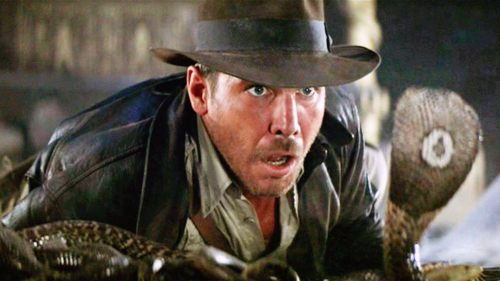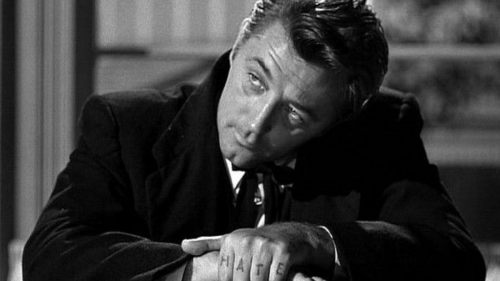Credits to Cover: The GREMLINS Novelization
"The book was better" is a phrase heard often in conversations about book-to-film adaptations. "Don't judge a book by its movie" is another common jab. While we've all uttered some version of this sentiment at one point or another, there have been those rare occasions when the opposite is true. As a lifelong bookworm and cinephile, I've discovered that whether I read the book before or after seeing the movie can have a profound influence on my enjoyment of the story across both mediums. In this column, I’ll be checking out old and new adaptations to further explore both sides of that experience. In the process, I hope to unveil how these two vastly different mediums work together to tell the same story, from cover to credits.
---
“How was it possible these humans could be so dense?”
- George Gipe, Gremlins
In the spirit of Halloween hijinks, I’m breaking the rules of “Cover to Credits” this month to talk about the insanity that is George Gipe’s Gremlins novelization. For as long as I can remember, Gremlins has been a must-watch movie in my household every Halloween and Christmas. Very few films can compete with the absurd blend of humor, horror, and holiday spirit on display in Joe Dante’s classic creature feature. So, if you thought the movie was a blast, then I guarantee you’ll enjoy this bonkers companion to the story.
For those unfamiliar with the process, novelizations are usually adapted by accomplished writers from an early draft of the screenplay and released in the same year as the film to aid in promoting it. Over the years, the books have become rare collector’s items, offering fans the opportunity to delve a little deeper into the worlds and lives of the characters they fell in love with onscreen. Using Chris Columbus’ script as a guide, George Gipe – a writer of fiction and screenplays, as well as the novelizations for Back to the Future and Explorers – was tasked with incorporating a lot of his own ideas into the story to stretch the material into a full-length novel. Going in what is perhaps the most obvious direction for a mischievous clan of little green monsters, the author took the liberty of making the Gremlins an alien lifeform.
In Gipe’s backstory, the Mogwai were created by an alien scientist named Mogturmen, who invented the hyper-intelligent and super-cute species with the intention of sending them to every inhabitable planet in an effort to teach others how to live a peaceful existence. Well, as we know, things didn’t quite work out that way, leaving Gizmo (and apparently three others just like him known as the “minority Mogwai”) as the sole embodiment of the intelligent, gentle, immortal creature the mad scientist set out to create. Meanwhile, his spawn, known as Gremlins or the “majority Mogwai,” are prone to rage and jealousy, cursing them to brief and violent lives.

The book begins (adorably) from Gizmo’s perspective, comfortably caged and living his best life in the corner of a shop in Chinatown. We learn that he’s lived there happily for forty years before his short and eventful stay with the Peltzers, watched over by the aging Mr. Wing, who has always blissfully understood and followed the three important rules of caring for the Mogwai: 1) Don’t expose them to light; 2) Don’t get them wet; and 3) Never, never feed them after midnight. Gizmo spends most of his time eating, singing, and mentally traveling to distant destinations inside his limitless extraterrestrial mind. Being immortal, he’s seen the atrocities of his species many times before, mostly as a result of humankind’s inability to grasp and follow those three simple rules. He mournfully reflects on past incidents when the Gremlins were the cause of death and despair, cursing his creator for not equipping him with the ability to communicate these imminent dangers to humans if they fail to obey the rules. Despite his many desperate attempts to warn them in his own language, humans have a tendency to view the Mogwai as little more than a harmless household pet. Until it’s too late.
Gipe depicts the Mogwai language as more complex than the movie suggests (fun fact: “chetz-wubba” is a Mogwai swear), adding scenes where Stripe and Gizmo have lengthy conversations about Stripe’s diabolical plan. These conversations reveal that until a Mogwai enters the pod stage, occurring when they’re fed after midnight, they’re incapable of inflicting harm on their own kind. Afterward, however, all bets are off! Being smarter and more experienced than his evil spawn, Gizmo uses tactics to confuse and divert Stripe’s efforts to discover how he and the others can transform into larger, more powerful beings. Eventually, the simple-minded creature uncovers the mystery of the three rules – thanks, once again, to the stupidity of mankind – making them strong enough to wreak havoc on the residents of Kingston Falls.

While it’s been revealed that Columbus’ early drafts of the script were much darker in tone and featured a much higher body count – including the Peltzer family dog, Lynn Peltzer, Pete, and Mr. Futterman – Steven Spielberg and Joe Dante opted to take a more family-friendly approach with the film. However, a few of those deaths and more violent details did make their way into the novelization (sorry, Mr. Futterman). The chaos starts out as a series of harmless and humorous pranks, which are, surprisingly, as much fun to read as they are to watch on screen. Gipe uses the radio DJ, heard only briefly in the film, to relay bizarre incidents happening all over town as Billy rushes around trying to stop the madness. The juvenile pranks range from changing all the stoplights and starting food fights in restaurants to filling all the basketballs with peanut butter, resulting in cancellation of the big game. Although, the Gremlins do initially join in the fun of spreading a little holiday cheer with the Christmas carolers, their pranks begin to escalate into more violent and life-threatening situations (sorry not sorry, Mrs. Deagle).

Of course, all our favorite scenes and characters remain relatively intact with a few minor embellishments: Rand Peltzer’s defective invention the “Bathroom Buddy” actually comes in handy during the final fight against Stripe; Lynn’s kickass kitchen battle is somehow even more satisfying after the revelation that she once dreamed of joining the army; and Mr. Hanson’s deadly day in class gets pretty bleak when all those syringes he used to blood test a Gremlin play a gruesome role in his demise. Then there’s Kate’s terrifying shift behind the bar at “Dorry’s Tavern” combined with her ominous tale of the worst Christmas ever – a speech Joe Dante fought Spielberg to keep in the movie. Finally, the story wouldn’t be complete without the Gremlins’ raucous night at the movies and Gizmo’s heroic joyride through the department store in Barbie’s convertible Stingray.

George Gipe manages to add just enough flavor and behind the scenes details to make the story feel new without ever missing a beat from the one we already know and love. So, if you’re dreading the end of spooky season and the days ahead when all the jack-o’-lanterns and little green monsters are replaced with twinkling lights and Christmas cheer, I highly recommend picking up a copy of this novelization to keep the horrors alive for a little while longer. At least until Christmas, when it’s time to watch Gremlins again!




